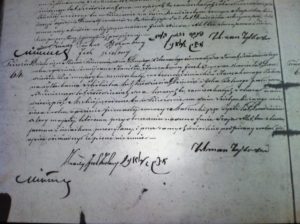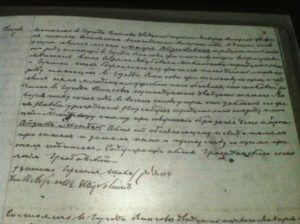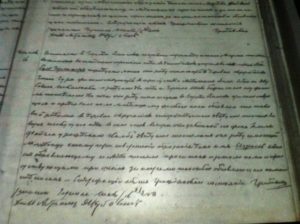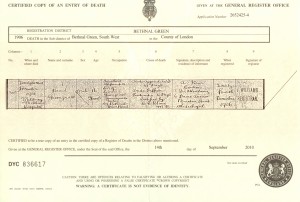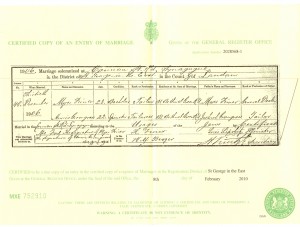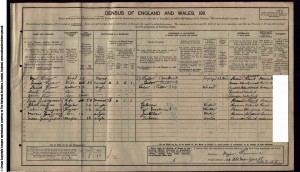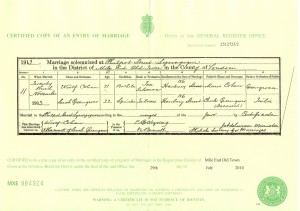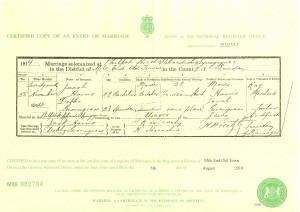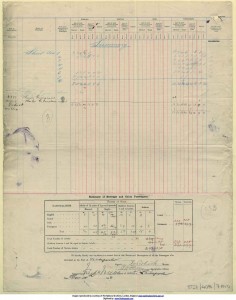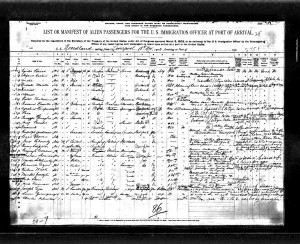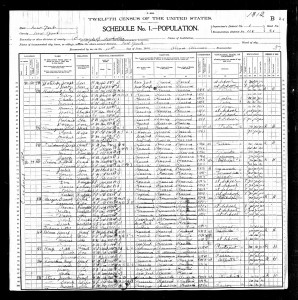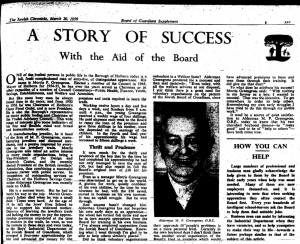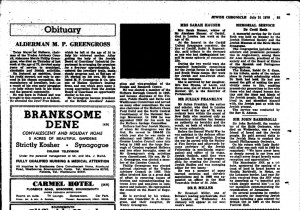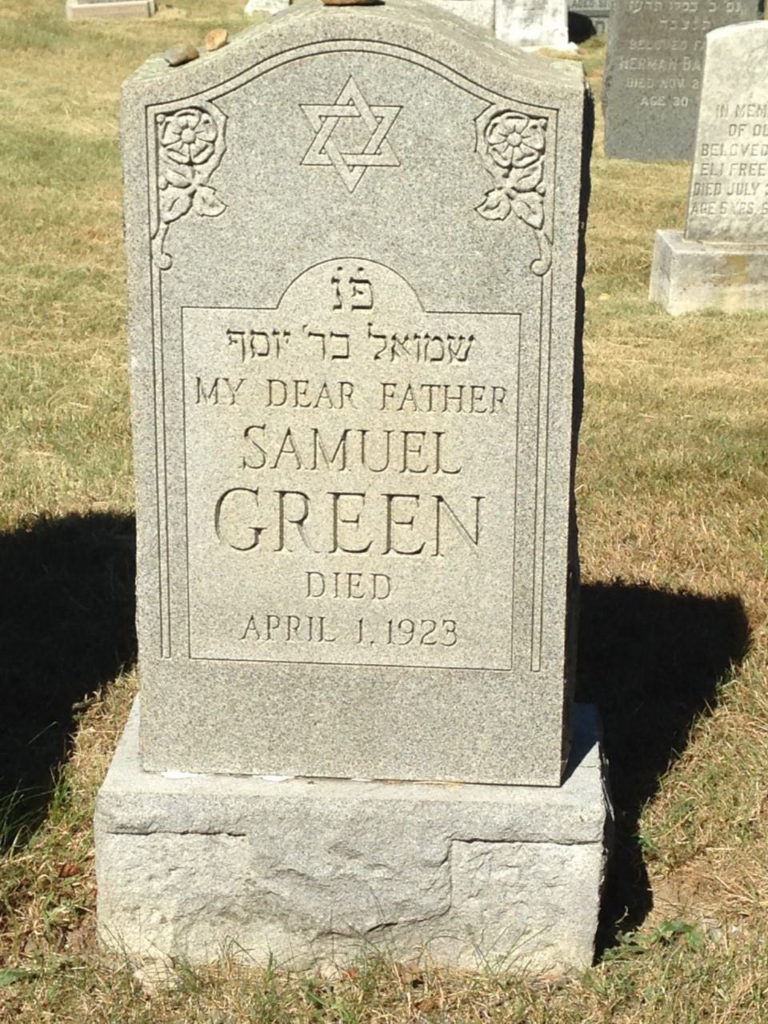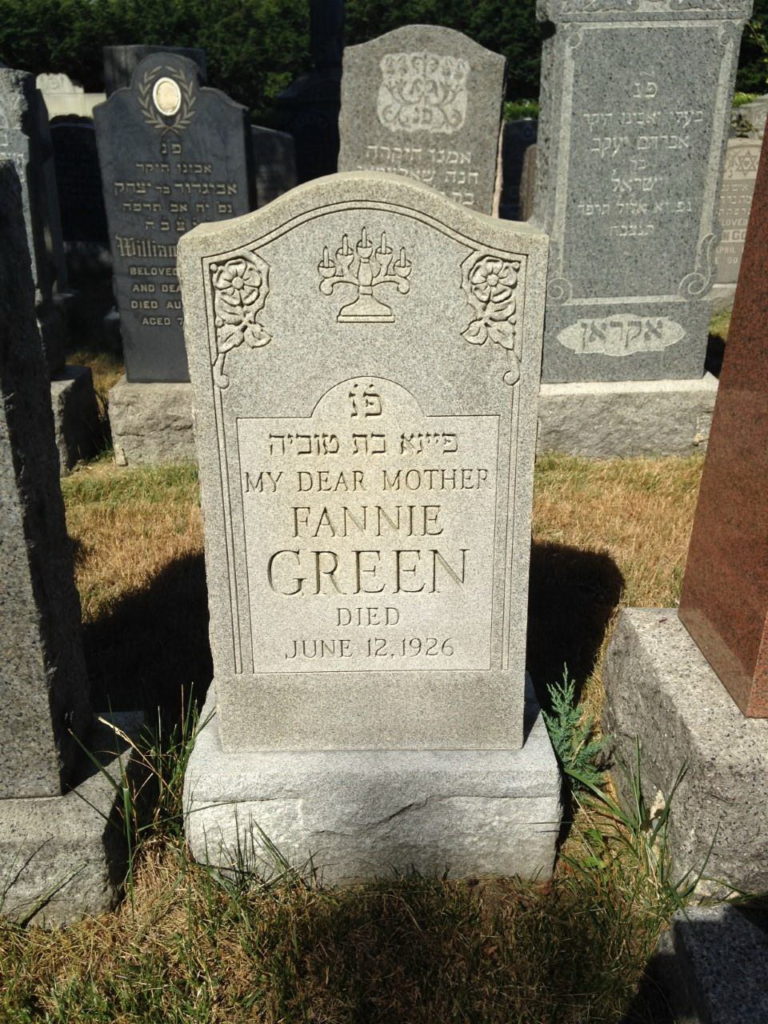I have asked quite a few members of the family about Szaja Gryngras and they are unanimous in that they know absolutely nothing about him. He was my great grandfather and unlike my other ancestors I too had no knowledge of him. When I began this journey I wasn’t even sure about his name but now I feel I know him quite well. I feel I have been on a quest to discover him and, sadly, I have yet to complete this task but I have made some progress so allow me to share what little I know with you.
So let’s start at the beginning. He was born on 6 Jun 1860 in Pinczów, Swietokrzyskie, Poland. Actually, at this time Poland didn’t exist. I won’t burden the reader with a lengthy history lesson as you can get this in detailed form from many sites or even your local library if they still open their doors. The partition and annexation of Poland was started in 1772 by Austria, Prussia and Russia but by 1860 pretty much all of what we currently recognise as Poland was controlled by Russia which included Pinczów. At this time the Russians weren’t quite so draconian and Szaja’s record of his birth (reproduced below) was written in Polish.
I have been able to get a rough translation of the birth record which reads as follows:
It happened in the town of Pinczow, on the day of fourteenth June in the year 1860 at 8am. Jew Jocek Gryngraz, tailor, aged 25, living here, in the presence of Jew Zehiman teacher aged 59 and Jack Zielony, servant, aged 62, counting people living here and he has shown us a baby, male, born here in Pinczow on 6th of current month and year at 11 PM, from his wife Zysla aged 24, who at circumcision was given a name Szaja Gryngraz and read to witnesses and signed by the witnesses, as the father said that he cannot write.
It looks like the record of Szaja’s birth was entered on the day of his circumcision being eight days after his birth.
At this point I suspect you are wondering how I found all of this information. First of all I know that the name of my great grandfather was Szaja Gryngras or Gryngraz. Seemingly, the letters ‘y’ and ‘i’ are interchangeable in Polish, hence, the name is frequently referenced as Gringras. In fact there are quite a few relatives that still bear the name in this format. This name is confirmed in the naturalisation papers of Morris Greengross. Looking at the naturalisation papers of Cissie Greengross it also confirms that Szaja adopted the name of Simon Greengrass when he came to this country presumably as an attempt to anglicise his name. Details of Szaja’s birth and also marriage(s) can be seen on this page from the Jewishgen site. You’ll note that the final column on the grids that include Szaja Gryngras includes a value under the title Film. This microfilm reference is held by The Church of Jesus Christ and Latter-day Saints (LDS) better known as the Mormons. The Mormons maintain Family History Centres worldwide and they are attached to their churches. I ordered the two films and they were eventually delivered to my local Family History Centre which was attached to the local LDS church in Watford.
Mormons research their families back at least 5 generations. They “seal” themselves to their spouses (and children, etc) for eternity. However, they believe the person they are sealing has a choice whether to accept it. It’s just a belief of their church. Certainly, all religions have some belief that those outside their faith find a bit weird. As for the genealogy centres (called Family History Centres) there are nearly 5,000 worldwide. They offer great assistance to anyone doing genealogy research. Not only are they staffed by knowledgeable volunteers who will assist with research, they have access to millions of volumes of books, microfilm, microfiche, etc. The largest repository of genealogy records in the world.
On 15 February, 1882 a marriage in Pinczow is recorded for Szaja Gryngras, 21, to Mindla Masow, 19, daughter of Jakub Szymon Masow and Sura Zylberg. On 15 September, 1883, another marriage is recorded for Szaja Gryngras, widower, 23, to Genendla Celm, 26, daughter of Mozek and Szandla. So in a period of 19 months Szaja was married, widowed and then remarried.
I know that the Gryngras/Greengrass/Greengross family first arrived in England in 1901. This is stated in the naturalisation papers of Morris Greengross. He is also particular to state that he came to England with his parents which dispels any previous theories that Szaja never came here with the rest of the family. Of course we do have to be careful about the accuracy of the statements as given from memory. Morris was naturalised on 1 December 1925, approximately 24 years after arriving on these shores. Whilst I have no doubt that the family’s arrival was around 1901, was it exactly 1901 or possibly 1900 or 1902. After all, by his own admission, Morris was only 9 when he came to England.
Most of the immigrants from Eastern Europe found their way across the sea from Hamburg or Bremen. Transit lists were maintained but, sadly, there are many missing from the Hamburg Shipping Lists and none have survived from Bremen. So, unfortunately, we have no further corroboration in this context.
At this time the family would have comprised Szaja, his wife Genendal and their 6 children, Annie, Sarah, Deborah, David (Dawid), Morris (Moisze Fiszel) and Cissie (Zissel). If they arrived in 1901, did they get here before 31 March when the 1901 census was held? The implication would be that if they were already here on/by 31 March their names would appear in the 1901 census. So this is where we encounter our first real oddity. If we search the England/Wales indexes for the 1901 census there is a single entry for a Simon Greengrass living at 5, Upper Rathbone Place, St Marylebone. His date of birth is listed as 1862 (only a two year discrepancy with our man) and his place of birth Russia. Poland as we have already learnt didn’t exist. His occupation is a tailor. Another accuracy for our boy. Out of a total of approximately 32½ million population there is just a single Simon Greengrass. The rest of the household at this address comprises Peter and Jane Coleman with their son Peter and two visitors: Jacob Nathan and Simon Greengrass who are both described as visitors. All occupants of the household state a place of birth of Russia.
Using a little lateral thinking suggests two possible explanations. Either this is our man or it is someone completely different. If this is not our man then there might be some expectation there that he would still be traceable in the 1911 census. In fact the 1911 census doesn’t show a single individual bearing the name Simon Greengrass. This suggests that maybe the above person is our man and that by 1911 he was either no longer in the country or no longer alive. Sadly there are no definitive answers to these questions but it does stimulate a logical though process.
So, if the Simon Greengrass living at 5, Upper Rathbone Place, St Marylebone on 31 March 1901 was our ancestor why was he living there and who were the Coleman family? As they all hailed from Russia, including the young Peter Coleman who was only 18 months old, clearly their name had not been Coleman and they could only have been in the country for a period less than 18 months.
I suspect that there is a strong possibility that this Simon Greengrass is our ancestor and, if so, then why was he living as a visitor with an unknown family separated from his wife and six children? My theory is that he probably came here in advance of the rest of the family to find suitable accommodation and they must have joined him shortly after 31 March.
The earliest address that I have relating to the family is 139, Bethnal Green Road. This is referenced on the Death Certificate of David Greengrass. (reproduced below)
David Greengrass died on 22 December 1906 at the Mildmay Mission Hospital. The cause of death was attributed to an acute appendicitis which he had experiencing for 21 days terminating in peritonitis for a further 6 days. He must have been in excruciating pain. Strangely under the Occupation (of the deceased) column the following is revealed:
“Jeweller’s apprentice. Son of Simon Greengrass Journeyman Tailor 139 Bethnal Green Road.”
This is the first reference we have to Szaja after the supposed entry in the 1901 census. The address could be helpful and looking at the marriage certificate of Myer F(e)iner and Annie Greengrass dated 30 December 1906 (eight days after David’s death) shows an address of 131 Bethnal Green Road. It also reports Annie’s father’s name as Joshua Greengrass giving us a name change in the same eight days for Simon/Szaja.
The next reference we find for the Greengross family in London is on 2 April 1911 being the date that the census was enumerated. The Greengross family, comprising Janie Greengross (Genendal), Sarah, Deborah, Morris and Cissie were living at 129 Old Montague Street, Mile End with Myer and Annie Finer (Greengross) together with their sons David and Aaron (Arnold) and Myer’s brother David (Lipa). No sign of Simon/Szaja and Genendal describes herself as married for 27 years suggesting a year of marriage of 1883 or 1884 consistent with the second of the two marriages I found for Szaja. Interestingly, she is not described as a widow so although this isn’t conclusive, it does suggest that Szaja was still alive and that the family were aware of this fact. The Greengross family are described as boarders. Additional information for 1911 shows the total number of children born to married women and the number still alive at the time of the census. Genendal had borne 6 children with 5 still alive. Annie had given birth to 3 children and the eldest, Martha, had died at birth.
Sarah Greengross married Woolf Cohen on 23 November 1913. Under the column that declares the bride and groom’s father, Sarah’s father is called Charles Greengross (deceased). This is yet another name for Szaja and also the first time he is described as deceased. Of course we don’t know whether the family had categorical evidence that Szaja was no longer alive or whether he was just presumed dead. Personally, I favour the former but that’s just an impression I have.
Debbie Greengrass (notice the reverted spelling) married Jacob Harris on 29 November 1914. The residential address is given as 22 Fordham Street. Remember that address we will refer to it later. Her father is named Josiah Greengrass without a ‘deceased’ this time but that might just be an oversight.
Although there is quite a lot of information here, none of it provides any conclusive proof of what happened to Szaja after 1901 when, seemingly, we found his name in the census.
So are there any conclusions from what we have learned so far?
- We know that Szaja came here in 1901 as reported in the naturalisation papers of Morris Greengross. Cissie Greengross stated in her naturalisation papers that she was seven when she came here with her parents which would have put their arrival a little later at 1902 or 1903. Well, they couldn’t both be right.
- We think that we may have accounted for Szaja in the 1901 census but this can never be corroborated.
- Szaja is first reported as deceased in 1913. There is nothing documented before this date that suggests his demise before 1913.
Actually, pretty much the only think of which we can be certain is that he can no longer be alive unless he has beaten the odds and managed to reach the age of about 152. As that really isn’t very likely we can be 99.9% certain he is now deceased. This would mean he must have died somewhere. Maybe in England or somewhere else. As all my efforts to locate a death for him in this country based on his known names and derivatives have failed he must have either gone abroad or changed his name to something that we cannot reasonably predict. If this is the case then we have no chance of locating any more about him after 1901. The alternative is to consider the possibility that he went abroad and never returned.
Using this supposition we find that on 18 November 1903 a Simon Greengrass departed on the Noordland (a transatlantic liner) from Liverpool bound for Philadelphia. The shipping record doesn’t tell us much (reproduced below) other than the passenger was 43 (i.e. born about 1860) and that he was married. You’ll also note that his name appears to be entered after the totals with one other name suggesting that he was a late arrival to the ship. The other name was an infant aged 1 and doesn’t appear to have any known relationship with our Simon Greengrass. Whilst the name and age are consistent with our relative we can’t be certain that it is the same individual.
This record would have been recorded in Liverpool before departure and, as indicated above, is not that informative. However, there is also a shipping manifest completed in Philadelphia, presumably on arrival which gives more information (reproduced below).
The additional information we learn from this manifest is that Simon Greengrass was a tailor from Russia and also described as a Hebrew. In those days Hebrew was regarded as a race. He could read but not write. He had been in London for 4 years and was intending to travel onto New York for which he had a ticket that was funded by himself. The information in the final columns has been entered a little erratically but it looks as though he was intending to stay with his brother, Max Greengrass, at an address of 96, Orchard Street. Funds brought with Simon amounted to £1. This doesn’t sound much but could be as much as £775 in today’s money.
So, now we have arrived in New York and Orchard Street is in Manhattan. Based on all the evidence I have presented thus far, it is not unreasonable that some time after 29 November 1903 our Szaja was living with his brother at 96 Orchard Street. So, my next task was to see if I could find some alternative independent corroboration that placed Simon Greengrass in the same or nearby location at a later date than 29 November 1903. The USA census is held every 10 years but unlike here it is held in the last year of a decade rather than the first year of a decade. US censuses started in 1790 and have continued every 10 years ever since. The first census in the UK was in 1801 but it was no more than a counting exercise without names and the results were largely discarded. The first real census in the UK was in 1841 and has continued ever since. The exceptional year was 1941 when no census was held due to the incidence of the war. The results for the 1931 census were completely destroyed in a fire during an air raid in 1942.
Simon Greengrass is not found in the 1910 US census (maybe he had died or returned to the UK) but I did find that the state of New York held its own census every 10 years but this was held in the 5th year of the decade so the 1905 census would only have been about 18 months after Simon Greenrass arrived at 96 Orchard Street. I felt that this was my Eureka moment. Surely something conclusive would come out of this?
Finding an enumeration sheet for an American address is not straightforward due to the relatively complex divisional arrangements that are used for taking the census. Fortunately, help is at hand from the Steve Morse one-step web site.
This is how you use the site:
- Select the Street which shows you that there are six Assembly/Election districts that are covered by Orchard Street in its entirety.
- Next you enter the number for Orchard Street and show the position on one of the map systems offered. I used Google maps. From here you can see the ‘cross’ streets.
- Armed with Delancey to the North, Broome to the South and Ludlow to the East you can reduce the number of Assembly/Election districts to one.
This results in 45 pages as entered by the enumerator. You can see from the order of preparation that he was crossing the road and go to the building out of sequence. However, the sad fact and conclusion that I reached was that the enumerator assigned to Assembly District 8 / Election District 8, which would have covered 96 Orchard Street, skipped the building. In fact you can see he went from 94 to 98. What was he thinking? Who knows maybe he couldn’t gain entrance and had planned to return later. In any event, he neglected to enumerate our address.
After I had recovered from this huge disappointment I decided to look at the 1900 census. After all Simon Greengrass had disclosed that he had intended to stay with his brother, Max Greengrass, at 96, Orchard Street in 1903. Maybe Max would have been at the same address in 1900. I went through the same process for 1900 and, alas, no-one by the name of Greengrass at 96, Orchard Street. However, what I did find was a family named Greengross at 98, Orchard Street albeit no-one by the name of Max. They were the following individuals:
Jacob Greengross b 1875 Russia Rosie Greengross b 1876 Russia Michael Greengross b 1897 New York William Greengross b 1900 New York
Interestingly, their name is Greengross not Greengrass which seemed to be the favoured Anglicisation at this time. The two sons are born locally but if you look at the census details (reproduced below) you can see that Jacob arrived in the USA in 1888 and Rosie in 1893. In addition to telling us the year of arrival the census records the number of years in the USA which I would have thought would be unnecessary. Jacob is correctly recorded as having spent 12 Years in the USA whereas Rosie only 3. We can only assume that the enumerator was numerically challenged.
Interestingly, in 1900 there appears to be only one other family with the name Greengross in the whole of the United States. They were living in Philadelphia which has the added interest factor of being the city to which Simon Greengrass sailed in 1903. The family comprised the following members:
Joseph Greengross b 1850 Russia Esther Greengross b 1850 Russia Isaac Greengross b 1879 Russia Rebecca Greengross b 1879 Russia Morris Greengross b 1885 Russia
Joseph’s trade is described as Peddler and his year of arrival 1890. The rest of the family appeared to join him in 1893.
That’s about as far as I have got so far. There is still no sign of what happened to Szaja Gryngras/Simon Greengrass. The biggest mystery is when and where did he die? In a Jewish Chronicle article (20 March 1959) entitled ‘A Story of Success’ about M P Greengross, it says that the subject’s father died when he was a small child. M P Greengross was born on 22 September 1892 so he would already been 11 when his father ‘disappeared’ in 1903 based on my suppositions above. Arguably, a little older than a small child but the passing of time can play tricks with the memory. In a Jewish Chronicle obituary to M P Greengross dated 31 July 1970 it states that ‘he (Morris) left the Jewish Free School at the age of 14 to help his widowed mother. This suggests that by 1906 the family were aware of the death of Szaja suggesting that if Szaja never returned from America it should be possible to trace his death in the USA on or by 1906. However, as there are no centralised vital records in the USA, it is possible that the record of Szaja’s death is not yet online and remains undetected but, who knows, in the fullness of time all will be revealed. However, if he changed his name then the date and location of his death/burial will remain a mystery for eternity.
Everything prior to this paragraph was compiled either before or on 13 March 2013. Effectively, I made no progress for the best part of 5 years but things started to change in 2018 when I took an Ancestry DNA test. The fact that it told me that I was predominantly Ashkenazi European Jewish came as no surprise. However, what was more interesting was the significant number of DNA matches that I had. At this point I was fairly new to the whole DNA subject so my immediate interest was to see whether I could work out how all these people might be related to me. I quickly learned that this was a particularly difficult task. Whilst, Ancestry facilitates communications between DNA matched people by enabling their messaging service, many people don’t reply or don’t have significant family trees to work out the relationship. One thing that Ancestry does have, which is of great help, is ‘shared matches’. That means you can look at an individual to whom you are matched and see whether they are matched to any others who are included in your own matches. This is, by no means conclusive, in the sense that other matches may not necessarily come through the same source. However, it does give you a starting point to research.
There were a number of people that I recognised. At that time, my closest match was named D.S. who I recognised as a first cousin of my father, with a match value of 331 cM. The next closest was named S.B. and I messaged him/her but didn’t receive a reply. I looked at the shared matches with S.B. and noticed that D.S. was a shared match which lead me to believe that we must be related on my father’s side. However, as it later turned out, S.B. had an extremely small match with D.S. so, at this juncture, it only succeeded in creating confusion. I did notice that there were two other people with whom there were shared matches with S.B. and they were Anne Goldstein and Leslie Resnick. Judging from the generic female icon next to Leslie’s name, despite the masculine spelling (as per UK English spelling), she was feminine. The DNA match with Anne was 111 cM and with Leslie 108 cM. Ancestry makes a rough prediction of the likely relationship. With S.B. it was 2nd – 3rd cousin, Anne Goldstein and Leslie Resnick, 3rd – 4th cousin.
As it turned out, the only person from the above three that returned my messages was Anne Goldstein. She told me that S.B. was Stephen Bienstock and that he was her 1st cousin 1 x removed. The common ancestor was Stephen’s grandfather, Samuel Green who was also Anne’s great grandfather. The first time I saw the name, Samuel Green, a shiver ran down my back. Samuel Green, Simon Greengrass? Could it be him? Of course I wanted it to be him but it just felt too easy and more like something out of a book or a TV programme. Nonetheless, I kept it to myself at this time.
It must have been around June 2018 that I suggested to Ian Finer, who is my first cousin, to take a DNA test. I did openly admit that my reasoning was totally selfish because I wanted to know whether he had a DNA match with any of these new ‘relatives’ that I couldn’t place on my family tree. In the event, not that long after this, Ian did take a test and, not unsurprisingly, he came up at the top of my match list with a DNA match of 930 cM, predicted, correctly, by Ancestry as a 1st – 2nd cousin. As I suspected, he also had a shared match with S.B., Anne Goldstein and Leslie Resnick.
Towards the end of 2018 or maybe early 2019, I must have first conveyed my suspicions to Anne Goldstein that I thought that, maybe, Samuel Green and Szaja Gryngras were one and the same. Initially and probably for quite some time she naturally and quite rightly rejected this theory. There were a few reasons that stood out:
- Samuel was born in 1875
- He was born in a town called Plonsk
- The 1910 census says that he had been married to Fannie Kronenberg for 4 years but he was already married with a wife in England.
On close examination, there is no documentation to support a date of birth of 1875. Samuel died in 1923 which would have made him young at 48. However, if his real date of birth was 1860 (Szaja’s d.o.b.) he would have been 63, still not that old by our standards but a reasonable life expectancy for 1923. Plonsk is nowhere near Pinczow but there is no documentary evidence to support that he came from Plonsk so he could have manufactured that. Obviously, there was little to prevent bigamists in those days as people were far less traceable but, as it happens, there is no documentary proof to support that he ever married Fannie Kronenberg so maybe his conscience prevented him from committing bigamy. The 1910 census shows Sam Green living with Fannie in Salem, Massachusetts with their 3 children, Bertha, Joe and Theodore. It states that they have been married for 4 years and Sam cam to the USA in 1905. Remember Szaja landed in Philadelphia in November 1903 so reasonably similar dates but not the same.
So at this point we had a working theory that Sam and Szaja were one and the same. It looked unlikely that it was ever going to be possible to prove conclusively that Sam was Szaja but equally, there was no evidence to prove that he wasn’t Szaja. I say ‘we’ because, by this time Anne (Goldstein) was getting more interested and had been converted to the idea that her great grandfather might have had some dark secrets. Time had moved on and we were now at the end of 2019, early 2020 and we did a bit of lateral thinking and thought that a different approach might be appropriate to look at Szaja’s siblings.
You may recall that earlier on in this story, I stated that Simon (Szaja) Greengrass had stated that he had come to visit his brother Max and 3 sisters in New York. So, if this was true, we needed to trace these siblings and then see if it was possible to trace their descendants with the possibility of some DNA matches. In hindsight, this might have been a little ambitious but, at the time, it seemed the most logical and only way forward.
For the record, I had already found a Max Greengrass in New York but I couldn’t prove that he was Szaja’s brother. In fact, he seemed to be the only Max Greengrass. The problem was that the only documents that I could find that showed a Max Greengrass was a World War I draft notice for a Max Greengrass married to a Mrs Rose Greengrass living at 1978 Second Avenue and the death of a Max Greengrass on 5 May 1928 in Manhatten. So, whilst this could well be Szaja’s brother, there wasn’t any evidence to support it and, strangely, there is no evidence of a Max Greengrass in any census. However, in the 1915 New York census, we find a Morris and Rose Greengrass living at 1978 Second Avenue with their children, Joseph, Isidor, Sophia and Yetta. So now we know that the sole Max Greengrass on record at this time in New York is also known as Morris. I found a marriage between Morris Greengrass and Rose Stein in Manhatten on 9 June 1903 and the 1905 census shows them living in Manhatten with their son, Joe. Also listed, at the same address are Kalmon and David Greengrass and they are described as Morris’s brothers, aged 20 and 30 respectively. The 1910 census for Morris/Max’s family shows a Kolmon Greengrass, which we can assume is the same person as Kalman Greengrass. On looking closer at the Max Greengrass death in 1928 on the FamilySearch website, the record shows that he was living at 1978 Z Avenue, which I am confident is a typo for 2nd Avenue, being Max’s address listed in WWI draft papers. It also states that his parents are named Joseph Greengrass and Sophie Kepkowitz. This shows a consistent anglicisation of the name Zysla.
On 6 March 1904, there is a record of a Kalman Grungrass, tailor, born in 1879, arriving at Ellis Island. In the immigration record, the column described as ‘who paid the passage’, for Kalman’s entry shows, brother-in-law, Isak Rock, 72, Underhill Air, New York. This information was immensely helpful, as can be seen a little later on. The last column on the form is entitled, ‘Deformed or crippled. Nature, length of time, and cause‘. Against Kalman, the entry reads, ‘Dwarf’. Assuming that Kalman wasn’t married at the time of his arrival, which is reasonable as the immigration record states that he is single, then Isak Rock must be married to Kalman’s sister. We already know that Szaja had stated that he had three sisters so the likelihood was that one of them was married to Isak Rock, who was the next person to find and there was an address for him as well!
Fortunately, the search for Isaac Roch (slight difference in spelling) was not hard. I found him living at 72 Underhill Avenue, New York with his wife Kate and daughter Sophie in 1900. The name of the daughter is significant as it is a prevalent name in the family. Morris’s daughter also has that name and we will learn later why this name is often used. We also now know that one of Szaja’s sisters is named Kate or Katie. Isaac and Katie married on 8 November, 1896, in a place called Lucas, Ohio. This is a bit of a mystery as to why they would have married so far from New York, approximately a distance of 500 miles. Katie and Isaac had three children, Sophie, Moses and Harry. Sophie married Morris Silverstein and Harry married Beatrice Altshuler. I have traced some of their families to living relatives along this branch.
Scanning through the Ellis Island arrival records, we find a Beile Grungrass and Channa Grungrass, who both arrived on 5 October 1902 departing from Pinezow. In itself this is not conclusive that they are sisters of Szaja but if we look at the shipping manifest for their arrival, it states that they are sisters and their referee is their sister, Mrs Isaac Roch of 72, Underhill Avenue, Brooklyn. They were detained at 1:30 p.m. and were given two dinners and, as there is another column for supper, we can assume that this must be lunch. So, now we have all three sisters in New York by the the time that Szaja arrived in 1903.
Beile or Bella married a Benjamin Altman on 24 November 1906. Her name is displayed as Beile Gringras and she states that her parents names are Joseph Gringras and Sitte Feldman. Her father’s name (Josek) is correct and her mother’s name was Zysla so, probably, near enough, but I’m not sure where Feldman comes from.
Benjamin and Beile, or Bella as she later became known, had four daughters, Sophie (that name again), Pauline, Bertha and Esther. Bertha married Sol Belkin and they had two children, Bernard and Leslee. Fortunately, Bernard recently took a DNA test and that created a match with myself Stephen Bienstock and Anne Goldstein. Bernard is 2nd cousin 1 x removed to me and has a 159 cM match in Ancestry. The predicted DNA match value for 2nd cousin 1 x removed is 0-316. Again within range.
At this point, it is probably worth talking a little about DNA matching and how it is measured. It is worth reading an article on the FamilySearch website. This articles provides some explanation behind the unit of measurement for DNA matching, being centimorgans (cM). You will also see that there is a chart that shows the ranges of centimorgan matches for specific relationships. You can see that the expected range of match for a 1st cousin is 553-1,225 cM. My match with Ian Finer (my first cousin. Ian’s father and my mother were siblings) is 930 cM, which is well within the expected range. The reason that the ranges can be quite wide is because we don’t inherit DNA from our parents equally and when DNA becomes diluted over the generations the ranges can start from zero, which means that although you might be related to someone, there can be no DNA match. Assuming that Szaja Gryngras and Samuel Green are the same person, it would make Anne Goldstein and I half 2nd cousins. The centimorgan range for half 2nd cousins is 9-397. Our actual match is 111 cM. Similarly, Stephen Bienstock and I would be half 1st cousins 1 x removed. The range for this relationship is 57-530 and our actual match is 207 cM, well within range. Interestingly, Ian Finer’s match to Anne Goldstein is 100 cM, whereas his match to Stephen Bienstock is only 53 cM, which is right at the bottom end of the range of expectancy.
Bella Greengrass arrived at Ellis Island with her sister, Channa, and it’s not hard to guess that Channa became known as Annie. Annie married Louis Horowitz on 17 June 1913 and gave her parents’ names as Joseph and Sophie. Annie and Louis had three children, Joseph, David and Etta but I have yet to trace their descendants.
You will recall that I spoke earlier of Szaja’s other brother, David Greengrass, who was living with his brother Max/Morris in 1905. The New York census was held on 1 June 1905 and, in fact, David had arrived from Rotterdam on 4 January 1905. The immigration document describes him as a tailor (spelt taylor) and it cites that his passage was paid by his brother M Grungas of Columbia Street, New York. David is also listed as being married but there is no evidence that he was accompanied by his wife and/or any family. David’s wife, Ewa Rudzinsky arrived on 18 September 1906 with her three children. It is a little hard to read the names, but they correspond to Harry, Betty and Max. Max’s name is the only one that is legible as Mordche (Morris), so it seems quite usual to shorten Morris to Max. The key point to note about Ewa’s arrival is that she was bound to join her husband in Chicago. David and Ewa had a further 6 children all born in Chicago. Betty married Louis J Resnick and they had two children, Myron and Rose. Myron had three children, Leslie, Gregory and Stephen and, for those of you paying attention, we have finally found Leslie Resnick who had a DNA match to me, Anne Goldstein and Stephen Bienstock.
There is a question regarding the choice of Chicago, that David chose as a residence. Obviously, he may have had a job opportunity there but, generally, locations are chosen based on other relatives already living there. After all, David’s first port of arrival was New York and he already had plenty of family living there, so why choose Chicago? My suspicion is that maybe there were some known family members there and searching the location and dates, there are some other Greengrasses there, also with similar family names. However, there is no proof, at this time, that there was a family connection but, maybe in time, a connection can be made.
We now know a lot more about Szaja and his siblings. I have always wondered whether Szaja was the oldest and the liklihood is that he probably was the firstborn. I do know that he had a brother, Chaim born in 1861 but I have no idea how long he lived or whether he remained in Pinczow or emigrated like the majority of his siblings. There was a sister born in 1862, Estera Chinda but she died in 1864. There is then a gap until 1874, the year in which Morris/Max and Katie were born. I do know that Morris was born on 18 March 1874 but as I don’t have an exact date for Katie, she could have been born in 1873 or even 1875 so it is unlikely that they were twins. The only other sibling that we haven’t talked about much is Kalman. In 1905 and 1910 he was living with his brother Morris, however, there is no record of his place of residence in 1915 in New York, The likelihood is that he probably was living in New York in 1915 as his death is recorded on 6 July 1919 in Manhatten. He is buried in the Mount Hebron Cemetery, which is also where Morris is buried. Bearing in mind the date of his death, it is possible that he succumbed to the Spanish Flu pandemic which was rife in New York at that time.
I am painfully aware that I need a conclusion to this article and it has to get back to the main point and reason for this lengthy piece, insofar as, what happend to Szaja Gryngras and, more importantly, were Szaja Gryngras and Samuel Green one and the same people?
I first suspected that Szaja and Samuel might be the same person, not that long after being made aware of the DNA match with Anne Goldstein and her 1st cousin 1 x removed, Stephen Bienstock. However, at that time, whilst we were aware that we all had a DNA match with Leslie Resnick, we didn’t know how that relationship fitted into the known family trees that we had. Once we had traced the other members of the Greengrass tree, it became far more apparent how we could be related. A few weeks ago a new DNA match showed up with a Bernard Belkin with a value of 159 cM. The name Belkin was not unfamiliar and, on closer examination, we already knew that Bertha Altman had married a Sol Belkin, so maybe Bernard was a descendant of this line. Bertha was the daughter of Bella (Beile) Greengrass, one of Szaja’s sisters. Anne Goldstein successfully made contact with Bernard and he confirmed that his parents were, indeed, Sol and Bertha Altman. This means that Bernard Belkin is my 2nd cousin 1 x removed. With a match of 159 cM this is well within the expected range of 0-316 cM. Whilst this definitely adds more proof of Szaja’s later identity, you can see that this is not a perfect science. Bernard Belkin could be my 2nd cousin 1 x removed and not show any DNA match. We are fortunate that all the ‘right’ matches have shown up in this quest, if they hadn’t Szaja’s true later identity might never have been uncovered.
My quest over the last 18 months or so has not been so much to prove that Szaja Gryngras and Samuel Green were the same person but more to try and prove that they couldn’t have been the same person. In that context, there is not a shred of evidence to show that they couldn’t have been one and the same. Consider the following:
- There is no evidence of Samuel Green’s entry to the USA. There are some records of a Samuel Green arriving at Ellis Island but no proof that they might be the same Samuel Green, particularly as it is a common name.
- There is no proof to verify Samuel’s supposed date of birth of 1875. The year is merely based on the date that he gave for the USA censuses in which he is captured, i.e. 1905, 1910, 1915 & 1920.
- There is no evidence of a marriage between Samuel Green and Fannie Kronenberg. In itself it wouldn’t contradict the identity theory because he could have been a bigamist.
- Samuel had told his family that he came from Plonsk but there is no evidence to support this. In fact, it is not impossible that time might have changed Pinczow into Plonsk due to a sequence of mis-spellings.
- Samuel never attempted naturalisation which would have failed if Samuel Green was not his true persona.
None of the above proves that Szaja had taken the new identity of Sam but, nonetheless, it certainly demonstrates that they could be the same person. Effectively, it cannot be proved that Samuel Green was genuine, in his name, date and place of birth or date of entry to America. This, obviously, leaves the door open to the possibility that Samuel Green was, indeed, Szaja Gryngas. As it can’t be proved that Samuel Green wasn’t Szaja Gryngras, can it be proved that he was Szaja Gryngras and I think that it can – nearly?
For this purpose, we need to backtrack. If you recall, I have spoken at length about DNA matches and it is only because of this technology that I have been able to further the tracing of what happened to Szaja Gryngras, when some interesting DNA matches were revealed to me. We know that I have significant matches with Stephen Bienstock and Anne Goldstein and, in turn both Steve and Anne have matches to Ian Finer, Leslie Resnick and Bernard Belkin. I have always known that Ian and I were first cousins and he also has a match to Steve and Anne. His match with Anne is 100 cM (mine is 111 cM so not too much of a disparity), however, his match with Steve is only 53 cM (my match with Steve is 207 cM). If we look at the match values chart, the value for a half 1st cousin 1 x removed is 57-530 so even though Ian’s match to Steve is significantly different to mine, it is still within range (just!). Bernard Belkin is a 2nd cousin 1 x removed and Leslie Resnick is a 3rd cousin and the expected ranges for both these relationships are 0-316 and 0-217. The point that I am trying to make here is that I don’t know whether Ian has a match with Bernard and Leslie but, even if he doesn’t, it doesn’t matter because the expected range starts at zero.
The other reason why it doesn’t matter is because I know, without any doubt, that my relationship to both Bernard and Leslie is through siblings of Szaja, which means that our relationship is established through Szaja’s father Josek (Joseph) Gryngraz or Gryngras, who is my great x 2 grandfather as he would be to Bernard Belkin and great x 3 grandfather to Leslie. If Steve’s grandfather and Anne’s great grandfather was Szaja Gryngras then we know how we are related. If Szaja and Sam were not the same person then we have to consider how else could we all be possibly related. In fact, there are only two other possible connections. The first would be through Fannie Kronenberg. Obviously both Steve and Anne have the same connection to Fannie as they do to Samuel so we have to take a closer look at the possibility of me, Ian, Bernard and Leslie being related to Fannie Kronenberg. We already know that the four of us are definitely related through the Greengrass/Gryngras family so if we are also related to Fannie Kronenberg, it would either mean that Fannie Kronenberg was related to the Greengrass family or all four of us are also related to Fannie Kronenberg’s family through an additional connection. This would mean that the four of us have a double DNA match, which is extremely unlikely but not impossible.
However, for the purposes of this hypothesis, let’s consider the possibility that Fannie Kronenberg was a Gryngras descendant. If this was the case, then we have to take into account what we know about Fannie’s family tree, which is very little. We know that Fannie’s father’s name was Thiel Kronenberg but we have no information about where he came from or his parents’ names. However, if we are furthering the Gryngras/Kronenberg connection possibility, we have to consider the likelihood that, maybe, Thiel Kronenberg’s mother was a Gryngras. Following this line of enquiry would suggest that maybe Josek Gryngraz, Szaja’s father, had a sister who married a Kronenberg and one of their children was Thiel Kronenberg. If that was the case, this would be the most recent connection to to the Gryngras family. Using this hypothesis, my connection to Steve would be more distant. We have already established that if Szaja and Sam were the same person, Steve and I would be 1st cousins 1 x removed. However, if Fannie was the granddaughter of Josek’s sister, then the common ancestor between me and Steve and Anne would be Josek’s father or mother, Icek Mendel Gryngratz or Baja Ita Wais, who are my 3rd great grandparents. If this hypothesis were correct they would be Steve’s 2nd great grandparents, which, in turn, would make Steve and I 3rd cousin’s 1 x removed. The expected match for this relationship would be 0-173 whereas, you may recall, my match with Steve is 207 cM. As we also know that Steve and Anne are related to Leslie Resnick and Bernard Belkin, I estimate that Steve and Bernard would be 3rd cousins which has a range of 0-217 which I suspect is within range.
The other possibility is that Samuel Green was either another brother of Szaja or possibly a cousin. I have done a fairly exhaustive search on Szaja’s siblings using a genealogist in Poland and the result was two further siblings Chaim (b 1861) and Estera (b 1862). Estera died in 1864 so the only unaccounted for sibling is Chaim. It is possible that Chaim didn’t survive past childhood but I have no further information on him at the moment. Even if he had survived to adulthood, I wouldn’t have thought that he would logically use the name Samuel as an anglicisation of Chaim. There is, however, a gap in the births of Josek and Zysla’s children between 1864 and 1874, the approximate year in which Katie and Max/Morris were born. It seems unlikely that there were no children born within that 10 year period but it is possible that none survived although there should still be a record of their births/deaths. The DNA matching between me and Anne and Stephen would still be in range because although it would be more distant, they would no longer be ‘half’ relatives. If Samuel Green was a cousin of Szaja then the relationships would be the same as Fannie being a cousin of Szaja. There is still the matter of not being able to find a record of a marriage between Sam and Fannie, which suggests that if they weren’t married that had to be a good reason for it.
Whilst I explored these hypotheses because it had to be done, I started off by saying that the Fannie Kronenberg being a cousin of Szaja is highly unlikely because, aside from everything else, it relies on the fact that there has to be a double connection and there is no evidence to show the Kronenberg family married into the Gryngras family. However, it must be said that it is possible, nonetheless. The other hypothesis of Samuel Green being either another brother or a cousin of Szaja is a more likely possibility.
The only other information that we have about Samuel is on his gravestone, which gives his Hebrew name as: שמואל בן יוסף, which translates to Samuel son of Joseph. We do know that Szaja’s father’s name was Joseph (Josek) but I don’t know Szaja’s Hebrew name. It could have been Shmuel but literally, the Polish name name Szaja translates to the Hebrew equivalent of Isiah so, again, if Sam and Szaja were the same person, there might be no reason for him to take exactly the same first name both in Hebrew and English equivalents.
It looks fairly conclusive from the information that we have on Fannie that it is unlikely that she came from the same location as the Gryngras family so, chances are, we can discount her as the connection. Just out of interest, if Samuel was a sibling to Szaja, then instead of Steve being my half 1st cousin 1 x removed (DNA match range 57-530), he would be my 2nd cousin 1 x removed (DNA match range 0-316) as our match is 207 cM both are within range. Similarly, with Anne, instead of her being my half 2nd cousin (DNA match range 9-397) she would be my 3rd cousin (DNA match range 0-217). Our match is 111 cM so both are within range again. I think that I am correct that if Samuel was (say) a 1st cousin of Szaja then Steve and I would be 3rd cousins 1 x removed (0-173) and Anne and I would be 4th cousins and Ancestry does list us as 3rd to 4th cousins, however, the best data I can get for 4th cousins is a range of 0-90. This means that the likelihood of Samuel being a 1st cousin or even more distant is very unlikely as it would mean that my relationship with both Anne and Steve is quite a bit above the top end of the DNA match range expectancy.
For completeness, it would be good to establish Szaja’s Hebrew name, insofar as comparing it to the name on Samuel Green’s grave stone (below). Logically, the equivalent Hebrew name for Szaja would be ישעיהו (Yeshayahu), however, if Szaja adopted the name Samuel then it would be consistent for him to take the name שמואל (Shmuel). It did occur to me that it might be interesting to see the names on the gravestones of Morris Philip Greengross and David Greengross, both sons of Szaja and Gnendla. David is buried in the Edmonton cemetery but I don’t know where Morris is buried. However, even if both of their graves don’t show their father’s name as שמואל (Shmuel), it wouldn’t be conclusive. It would be interesting if their father’s name was written as שמואל (Shmuel) though.


